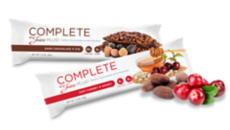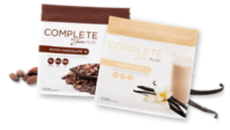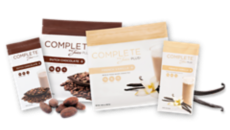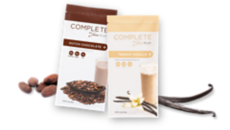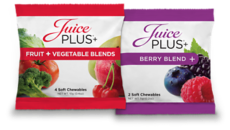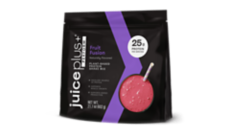What is in Omega Blend from Juice Plus+?
?wid=920&_ck=1623958048842)
When it comes to omega products, most of what’s available is made from fish oil. At Juice Plus+, our philosophy is to source the best nutrition from plants: fruits, vegetables, seeds, and algae. So when you ask “what is in Omega Blend from Juice Plus,” we’re happy to tell you: plants!
Omega Blend is made from a naturally balanced, minimally processed mélange of plant-based oils from:
- Algae
- Pomegranate seeds
- Sea buckthorn berries
- Raspberry seeds
- Tomato seeds
- Safflower seeds
Together, these oils supply a full suite of omega fatty acids: omega-3, omega-5, omega-6, omega-7, and omega-9.
Why Supplement with Omegas?
There’s a large and ever-growing body of scientific evidence that a diet rich in these fatty acids has multiple health benefits, especially for the brain, eyes, heart, joints, and skin. Unfortunately, most people don’t get enough omegas in their diets — especially not from high-quality plant sources.
To make matters worse, the omega fatty acids in the average American diet are not present in the optimal ratio. Omega Blend is a naturally balanced, plant-based omega supplement that can help you bridge the gap between what you should eat in an ideal world and what you actually do eat in this one. Whether you’re looking for a vegan omega-3 option, or specifically an algae omega-3 supplement, or a broad array of omegas in a vegan omega-3-6-9, Juice Plus+ Omega Blend will meet your needs, and do you one better with omega-5 and omega-7, too.
Why So Many Omegas?
Most omega products focus on one omega ingredient: omega-3. Juice Plus+ Omega Blend features a blend of five different omega fatty acids. Why? Because like the instruments in an orchestra, each omega has its own role to play.
What are Some Plant Sources of Omega Fatty Acids?
Food is the first way to add more omega fatty acids to your diet. Most people think of fish when they think of food sources of omegas. But plants can be good sources too! What are the best plant sources of omega fatty acids?
Omega-3: To get more of the most famous omega fatty acid, eat seaweed, which is one of the only plant foods to provide omega-3 as DHA and EPA. Nori, wakame, kombu, and dulse are good options.
Omega-5: Pomegranate seed oil and coconut oil both have omega-5.
Omega-6: The trick with omega-6 is to avoid less-healthful sources, like the vegetable oil in many processed foods, and stick to better-quality sources like almonds, walnuts, cashews, tofu, hemp seeds, sunflower seeds, peanut butter, and whole grains.
Omega-7: Avocado toast, anyone? Avocadoes are a source of omega-7, as are macadamia nuts and the oil of sea buckthorn berries.
Omega-9: Olive oil supplies omega-9, as do macadamia nuts, almonds, cashews, hazelnuts, pistachios, walnuts, sesame seeds, chia seeds, and sunflower seeds.
What is in Omega Blend from Juice Plus?
As a plant-based omega supplement, Juice Plus+ Omega Blend is made with three classes of plant-based ingredients:
1. Algae Oil
Oily fish are considered the best source of the omega-3s EPA and DHA. But where do fish get their EPA and DHA? Algae! That’s right, fish can’t produce omega-3 fatty acids. They get their omegas from the algae they eat. We cut out the middle fish and went straight to the plant-based source for Juice Plus+ Omega Blend, with algae omega-3 from Schizochytrium sp., a brine pond cultivated microalgae.
If you’ve ever wondered how vegans get omega-3s, algae oil is their secret. But is vegan omega-3 as good as fish oil? Yes! Algae oil is nutritionally equivalent to salmon in terms of raising blood levels of DHA and works the same way in your body that fish oil does.[x],[xi]
2. Seeds Oils
Did you notice nearly every kind of omega is present in seeds? That’s why Omega Blend is heavy on seed oils, such as pomegranate seed, raspberry seed, safflower seed, and tomato seed. Seeds of all kinds are nutritious food because they contain everything a growing plant needs to get a start in life, including various omega fatty acids.
Pomegranate seeds: The seeds of this ruby-red fruit are one of the only plant foods to contain omega-5.
Raspberry seeds: The oil of raspberry seeds is comprised of an impressive 54% omega-6 and 32% omega-3.[xii]
Tomato seeds: Omega-3, omega-6, and omega-9 are all naturally found in tomato seeds.
Safflower seeds: These seeds are among the highest in omega-6, but the safflower oil we use provides a substantial source of omega-9.
3. Sea Buckthorn Oil
The sea buckthorn berry is unique in the natural world. This little shrub grows at high altitudes in the Himalayas, where it has been consumed for thousands of years. What’s unusual about it is its natural concentration of omega-7. (Berries don’t usually contain fats.) In fact, it’s one of the only food sources of this healthy fat. But it doesn’t just contain omega-7. It’s one of the few plant foods that also contains omega-3, omega-6, and omega-9![xiii]
Why Cold Process?
Most omega products come in soft gels, which use heat and oxygen to fill and seal. That’s a problem, because both heat and oxygen cause oils to degrade. Our solution is to use a special cold process method to seal our capsules shut. If you look carefully at one of the capsules, you’ll notice a little bubble inside. It’s not oxygen in there, it’s nitrogen, which keeps the oils fresh.
In summary, Juice Plus+ Omega Blend is a one-of-a-kind mix of plant-based omegas that is:
- Sourced from algae, seed, and sea buckthorn oils
- A naturally balanced mix of omega fatty acids
- 100% vegan
- Free of GMOs
- Gluten-free
- NSF-certified
Get to know your Juice Plus+ products from fruits and vegetables to whole food nutrition. There is plenty to learn about the health benefits of Omegas 3, 5, 6, 7 and 9. How do you include omega fatty acids in your diet? Share in the comments!
[viii] Koff A. Omega 5 and 7—Are they in you? Ashley Koff blog. 2010 Jul 20. https://ashleykoff.wordpress.com/2010/07/20/omega-5-and-7-–-are-they-in-you/
[ix] Sales-Campos H, et al. Mini Rev Med Chem. 2013 Feb;13(2):201-10. https://pubmed.ncbi.nlm.nih.gov/23278117/
[x] Arterbum LM. J Am Diet Assoc. 2008 Jul;108(7):1204-9. https://pubmed.ncbi.nlm.nih.gov/18589030/
[xi] Ryan L, Symington AM. J Funct Foods. 2015 Dec;19, Part B: 852-58. https://www.sciencedirect.com/science/article/abs/pii/S1756464614002229
[xii] Jurgonski A, et al. Nutrire. 2018 Dec;43(26). https://link.springer.com/article/10.1186/s41110-018-0086-x
[xiii] Patel CA, et al. Remedial prospective of Hippophae rhamnoides Linn. (Sea Buckthorn). ISRN Pharmacol. 2012;2012:436857. https://pubmed.ncbi.nlm.nih.gov/22530142/


